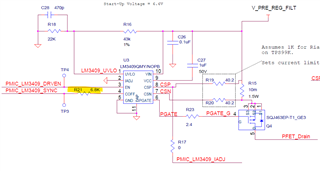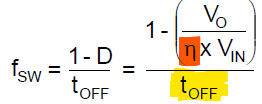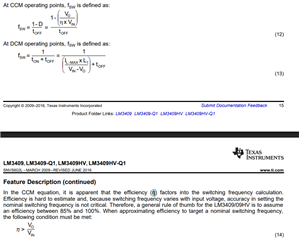Other Parts Discussed in Thread: LM3409,
Tool/software:
Hello
I have a question about LM3409.
1. In the DLP4620SQ1EVM circuit diagram, Roff and Coff are not connected separately, and the Sync period seems to be set in TPS99001. And 6.8k ohm is connected in series. Is that right?

2. In the LM3409 data sheet, there is an equation for the switching frequency. In order to know Toff, I need to know Coff and Roff, so how do you calculate switching frequency? And what is η? about 0.95?


3. I want to reduce ΔiL-PP as much as possible. How can I do that? I don't know how to calculate Roff and Coff since they are not connected.

4. To design ΔiL-PP close to '0', should I change LM3409 to another part?


